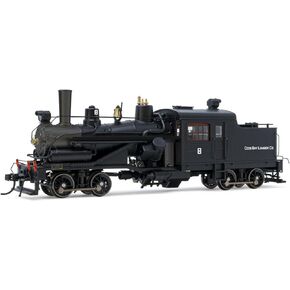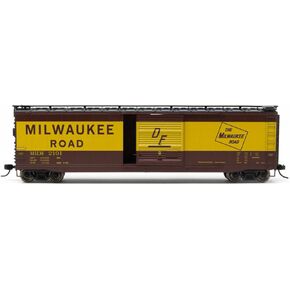- Shopping, made easy.
- /
- Get the app!
GE Transportation was considered the largest producer of diesel-electric locomotives in North America, and has been essential in producing locomotives since 1912. Following several partnerships in creating locomotives, it wasn't until 1956 and the release of their Universal Series for export, that they became a serious competitor. The U-Boats of North America, soon followed suit, a larger gauge and heavier than the initial universal series garnering domestic commercial success. Constructed from a U25B, the General Electric U25C ended up even longer; the first second generation diesel engine on six axles made its debut in 1963. Ambitious plans were made when creating the first transcontinental railroads, like the Northern Pacific Railway, spanning over seven states and into Canada, wanting to connect the Great Lakes to the Puget Sound, believed to follow much of the same trek as Lewis and Clark. The Northern Pacific Railway became a major contributor in establishing the the northern states, such as North Dakota by incentivizing farmers with free land for making the move and providing crops to haul during early contruction in the 1870s. Like all railroads during this time, expansion started breaking the bank as they tried to beat out the competition and the golden spike was finally driven into the ground to signify its completion in 1893. After the completion, effeciency became the priority, such as upgrading locomotives to diesel, quicker and smarter policies as the need for rail grew becoming a signifcant role in logisitics, partnering with other railroads and eventually merging into part of the BNSF Railway that it is a part of today.
 Rivarossi Heisler Steam Locomotive Cass Scenic Railroad #6 3-Truck Model HO Scale w/DCC Sound Decoder Model Train HR2949S
KWD 168
Rivarossi Heisler Steam Locomotive Cass Scenic Railroad #6 3-Truck Model HO Scale w/DCC Sound Decoder Model Train HR2949S
KWD 168
 Rivarossi Heisler Steam Locomotive Cass Scenic Railroad #6 3-Truck Model HO Scale DCC Ready Model Train HR2949
KWD 125.500
Rivarossi Heisler Steam Locomotive Cass Scenic Railroad #6 3-Truck Model HO Scale DCC Ready Model Train HR2949
KWD 125.500
 Rivarossi Heisler Steam Locomotive Coos Bay Lumber Company #8 2-Truck Model HO Scale DCC Ready Analog Model Train HR2947
KWD 95.500
Rivarossi Heisler Steam Locomotive Coos Bay Lumber Company #8 2-Truck Model HO Scale DCC Ready Analog Model Train HR2947
KWD 95.500
 Rivarossi Milwaukee Road Box Car with Sliding Door Running Number 2101 HO Scale Train Rolling Stock HR6584A
KWD 11
Rivarossi Milwaukee Road Box Car with Sliding Door Running Number 2101 HO Scale Train Rolling Stock HR6584A
KWD 11